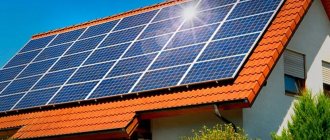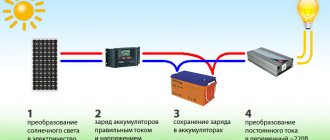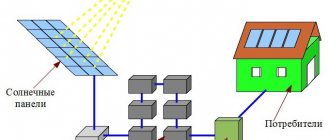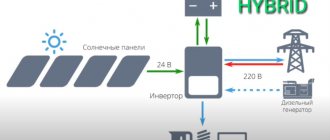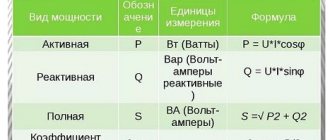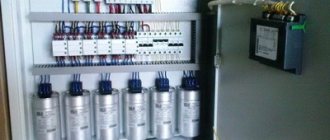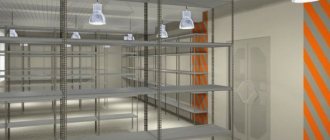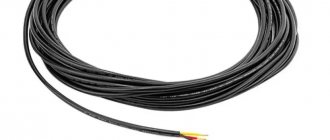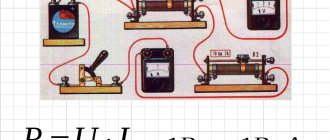Solar panels receive energy from the sun and convert it into electricity. The use of a free resource is not entirely free - the cost of the equipment is quite high, and in addition, the complex requires maintenance, replacement of used elements, and updating of the composition. In order not to spend extra money, you should determine in advance the power of solar panels needed to power your home. To do this, you need to know the parameters of the equipment, how much energy the solar battery generates during daylight hours, how much is per panel and for the entire complex as a whole. The question is complex and capacious, so we will consider it in order.
What is a solar battery
If you decide to install a solar power plant at home, you need to have an accurate understanding of its structure. First of all, you need to know what solar panels are and how they work.
First of all, we need to clarify the terminology. The term “solar batteries” is commonly understood as the entire complex of receiving, converting and storing solar energy. Visible elements located in open areas (roofs, special support structures, or simply on the ground) are solar panels. It is a plane made up of individual solar cells. Each of them is an independent receiver of solar energy, converting it into electricity. For this purpose, the photoelectric effect that occurs when semiconductors are illuminated is used:
The efficiency of solar panels directly depends on the size, type and number of individual elements that make up a given set. One element is capable of producing a certain, rather small amount of energy. However, combined into a battery (connected in parallel) and made in the form of a continuous receiving surface (panel), they can provide energy to a certain number of consumers. All that remains for the user is to calculate the solar panels and determine how many panels and additional equipment need to be purchased.
We advise you to read: correct installation of solar panels on the roof of a house or cottage.
Varieties
The efficiency and performance of solar panels depend on the design of the individual cells. There are several varieties:
- Monocrystalline. They are made from a single single crystal grown from silicon under certain conditions. They are a thin cross section. The efficiency is 17–22%. These are the most expensive and high-quality elements. Outwardly they look like black rectangles with beveled edges.
- Polycrystalline. Designed to reduce the cost and final price of the elements. They are made from molten silicon, consisting of many crystalline formations. The efficiency is 12–18%. The characteristics of these elements are somewhat reduced, but the price is also more affordable for the mass buyer. Externally, they are blue rectangles.
- Amorphous elements. These elements have weaker characteristics than mono- or polycrystalline designs. However, they are much cheaper, allowing the overall output of amorphous solar panels to be on par with higher-performance designs. The only difference is the number of elements. Amorphous solar cells are made from different materials and can be rigid or flexible. A special feature of such panels is the ability to work in cloudy weather when light levels are low.
Gallium arsenide panels are considered the most productive panels, but they are usually not taken into account in the general classification. They are too expensive, so they are not available to private users.
In addition, there are single- and double-sided solar panels that can absorb light on one or both sides. However, so far no application has been found for double-sided panels, since a reflective system is required to use both sides at the same time. It is difficult to manufacture and configure; it is cheaper to use a larger number of conventional panels.
Types of batteries and their characteristics
Starter batteries
You should choose this type only if the place where the battery will be installed has good ventilation. This type of battery, designed to operate as part of a solar power station, has a fairly high self-discharge rate. They are used in cases where the solar battery is forced to operate in difficult conditions.
Batteries with adhesive plates
Such devices can be called the best option in cases where it is impossible to carry out constant maintenance of the system. In addition, gel batteries are indispensable if installed in a poorly ventilated area. However, such electrical energy storage devices cannot be called a budget option. In addition, the service life of such batteries is relatively short. The positive qualities of such elements include low losses of electrical energy, which will significantly extend the operation of the station at night and in cloudy weather.
AGM batteries
Structure of an AGM battery
The basis for the operation of these electrical energy storage devices are absorbent glass mats. Between the glass mats there is an electrolyte in a bound state. The battery can be used for its intended purpose in absolutely any position. The cost of such batteries is relatively low, and the charge level is quite high.
The service life of this battery is approximately five years. In addition, the distinctive features of an AGM-type battery are: the ability to move in a fully charged state, the ability to withstand up to eight hundred full charge and discharge cycles, relatively small size, fast charging (about seven and a half hours).
This battery operates in a temperature range from fifteen to twenty-five degrees. However, such batteries do not tolerate an incomplete charge.
Gel batteries
The electrolyte in this battery has the consistency of jelly. The design of such batteries is highly resistant to charge and discharge. They do not require numerous maintenance activities. The cost of such an element is relatively low. Energy losses are also not significant.
Flooded (OPzS) batteries
The electrolyte in these batteries is in a liquid state. They do not require constant maintenance. In most cases, you will need to monitor your electrolyte levels about once a year. Such devices, designed to store electrical energy, are designed to discharge at low currents, and can also withstand a large number of full charge and discharge cycles.
However, the cost of such devices is quite high, so it is advisable to use them in powerful power plants that convert solar energy into electrical energy.
Composition of a solar battery kit
A set of solar panels for a home is a set of equipment where the panels themselves play the role of only a receiver and source of energy. The panels themselves, receiving and processing light into an electrical signal, send it through the charge controller to the batteries. They are connected to a network inverter - a device that converts direct current into stable alternating current 230 V. The inverter supplies this voltage to consumers, and it can send the excess (if any) to a centralized network. Some low-power kits only work to supply their own consumption and are not capable of delivering anything to the network. In European countries, a scheme for discharging excess energy into the network has been used for quite some time, for which the owners of a private solar power plant receive certain benefits, discounts or surcharges.
All equipment is located in the house, with only solar panels outside. For a private home, this kit may be sufficient even without additional recharge from a centralized network, if the calculation of the number of solar panels and additional equipment is carried out correctly. A special feature of any kit is the ability to increase its parameters by installing additional panels and increasing the battery capacity. Since performance is directly related to the illuminated surface area, the total size of the panels determines the capabilities of the entire set.
When calculating the parameters of the complex, it is necessary to make allowances for the variability of solar illumination. For example, in the summer the complex produces 10 times less energy than in the summer. In addition, weather conditions also make their own adjustments. Therefore, it is only possible to determine the performance of a solar power plant approximately, and when making calculations one has to make a large margin. Large industrial solar power plants capable of powering large populated areas have maximum efficiency.
After purchasing everything you need, you can think about the project for which you can use it all, for example, you can build a solar water heater for a swimming pool.
Insolation
This parameter means the number of sunlight falling per unit area of the battery. It is individual for different regions of Russia.
If the user lives in an area where the sun does not appear often enough, then it may well be that the selected panel will not be able to function at full capacity. It is easy to find reference books on the World Wide Web to determine it. For megacities, this indicator is even calculated on a monthly basis.
Of course, in winter this figure is lower than in the summer months.
Where can I buy
You can purchase solar panels either in a specialized store or online in an online store. In the second case, the budget option for purchasing products on the Aliexpress website deserves special attention. For some panels there is an option for shipment from a warehouse in the Russian Federation; they can be received as quickly as possible; to do this, when ordering, select “Delivery from the Russian Federation”:
| Mini solar panel with voltage from 2 to 12 Volts | 100 Watt 12 Volt Flexible Solar Panel | 300 Watt Flexible Solar Panel Set |
| Dokio Portable Solar Panel 18V 200W | Lamp with built-in solar panel power supply | Polycrystalline solar panel 40 Watt, 18 Volt |
conclusions
It is not easy to perform an independent calculation of a solar station. The participation of an experienced specialist or an order to carry out design work in a specialized organization is required. However, there is a completely simple and free option - calculating a solar power plant for a home online. A solar power plant calculator is used, of which there are many on the Internet. To get the result, you just need to insert your data into the appropriate windows of the program and get the result almost instantly. It is recommended to duplicate the calculation a couple of times on other sites in order to use the average value.
What does the power of solar panels depend on?
The design of the solar battery is not the only factor that determines the operational performance of the complex. External factors interfere with the process and reduce the capabilities of the complex. They affect the operation of the equipment individually and collectively, reducing the efficiency and reducing the performance of the solar station.
The power of a solar battery is the amount of electricity it can produce per unit of time. This is a finite value, that is, calculated based on the maximum value and having a certain limit. It is known that the solar constant is 1 kW per 1 m². This value, measured under certain conditions, denotes the amount of energy falling on the earth's surface on a sunny day at a temperature of 25° and a constant vertical incidence on the surface. In practice, obtaining the full calculated amount of energy is impossible.
The efficiency of solar panels is limited and does not exceed 24%, so the maximum power received from 1 m² of receiving surface can be 0.24 kW. This is under ideal conditions and with constant correction of the position of the surface relative to the Sun. In practice, such conditions do not exist. Weather, climatic and seasonal conditions interfere with the situation. Entire cloudy weeks are possible; the length of daylight in summer and winter differs significantly.
In addition, temperature also affects the ability of solar cells to produce energy - its production drops significantly as soon as the temperature rises above +25°. This means that on a clear summer day, when the power of solar panels per square meter should be maximum, it will not be possible to obtain the expected result due to the strong heating of the solar cells. Therefore, when calculating a solar power plant, it is necessary to make adjustments for seasonal conditions, day length and other natural factors.
The next factor that must be taken into account when performing the calculation is the degradation of solar panels. This indicator differs for different models; there are samples that retain up to 90% of their performance qualities even after 20–25 years of operation. however, for most panels, degradation occurs evenly and is proportional to the duration of use.
In addition, the calculation of the number of solar panels must be done taking into account losses on additional equipment - the inverter has an efficiency of about 92–96 (and this is one of the best models). In addition, losses on the battery and controller are inevitable, which reach 40% and also reduce the overall parameters of the complex. The devices themselves consume energy to power their own circuit boards. Therefore, a complete and accurate calculation of solar panels is an extremely difficult task that requires experimental confirmation.
Each sandpiper praises its swamp
Although 52% of respondents point to a reproducibility crisis in science, less than 31% believe published data is fundamentally incorrect and the majority indicated that they still trust published work.
Question: Is there a reproducibility crisis?
Of course, you shouldn’t lash out and lynch all of science as such just on the basis of this survey: half of the respondents were still scientists associated, in one way or another, with biological disciplines. As the authors note, in physics and chemistry the level of reproducibility and confidence in the results obtained is much higher (see graph below), but still not 100%. But in medicine, things are very bad compared to the rest.
A joke comes to mind:
Marcus Munafo, a biological psychologist at the University of Bristol, England, has a long-standing interest in the problem of reproducibility of scientific data. Recalling the times of his student youth, he says:
Question: How much of the already published work in your field is reproducible?
Power calculation
Let us consider in detail how to calculate the power of solar panels. First of all, you need to calculate your consumption. To do this, you need to add up the power consumption of all electrical appliances, heaters, lighting and other consumers. This is not easy to do, since you will have to remember all the little things, of which there are quite a lot.
It is worth noting that if you plan to install solar panels at your dacha, then, as a rule, such a decision will pay off due to the fairly small required power.
For simplicity, let’s consider an example of calculation based on the finished consumption amount. For example, there is a private house that consumes 300 kWh per month. This means that the consumption per day is 10 kWh. Here it is necessary to determine how many solar panels capable of generating at least 10 kWh of energy per day are needed for the house.
First of all, you need to decide on the operating time of the system. Even the most powerful elements can only accept energy at certain times of the day. The working period is called peak sun hours. They should not be confused with daylight hours, which are much longer. However, morning and evening hours are not taken into account, since they are unproductive for the equipment.
As a rule, the time taken into account is from 9 a.m. to 4 p.m. This period can be further shortened to correct losses from degradation of panels, worn-out equipment or batteries. Let’s say the working time of the panels per day is 5 hours. If the requirement is 10 kW*hour, it is necessary that the power generated by the panels be 2 kW. Using this value, you can calculate how many solar panels are needed to power your home. To do this, you need to study the technical characteristics of different models and choose the most successful options.
There are other methods. You can calculate the power using the formula:
where Rsp is the power of the panels, kW;
Ep — daily consumption, kW*hour;
K - loss coefficient (1.2–1.4);
Rins - insolation power on the earth's surface;
Eins - average monthly insolation value (taken in tables).
This formula gives a fairly correct result, but it is difficult for an untrained person to use. We will have to look for insolation values that differ by region. For inexperienced people, the easiest way is to use an online calculator, of which there are quite a few on the Internet.
Let's assume that the panel power is 100 W, to calculate the quantity you will need 2 kW divided by 100, i.e. it turns out that we need to buy 20 panels to provide a house with a consumption of 300 kWh per month with free energy. There are low-power models, 50 W each, suitable for powering low-consumption lighting devices, but you will need twice as many of these. It is necessary to select devices with some reserve, taking into account the possibility of additional consumers and equipment degradation. In practice, one also has to take into account the cost of the panels and their operating conditions. For example, if there are few sunny days a year, the best option would be flexible models that work well even at dusk.
In conclusion, it is necessary to recall that independent calculation of power is a difficult task even for professionals. We have to take into account a large number of factors that an unprepared person has no idea about. Therefore, the best option would be to contact a specialist, or calculate using an online calculator (which is somewhat worse).
